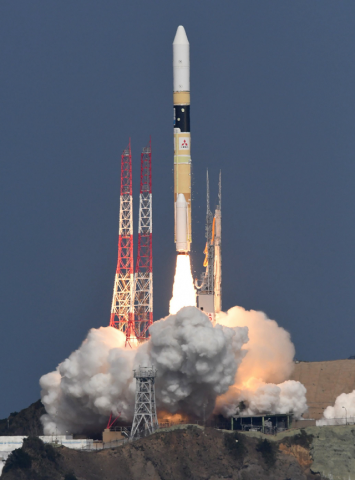Japan launches environment monitoring satellite
Will help create and publish "emission inventories" of the CO2 output of various countries

A H2A rocket lifts off from its launching pod of Tanegashima Space Centre on October 29, 2018 as it carries an Ibuki-2 greenhouse gases observing satellite and United Arab Emirates' KhalifaSat earth obervation satellite. PHOTO: AFP
The nation's H-IIA rocket lifted off Monday afternoon at 1:08 pm (0308 GMT) from the Tanegashima Space Centre, according to the Japan Aerospace Exploration Agency (JAXA).
China, France launch satellite to study climate change
About 16 minutes later, it sent a Japanese satellite nicknamed Ibuki-2 into orbit.
The satellite is officially named GOSAT-2, short for "greenhouse gases observing satellite-2", and is intended to provide data that will help Japan create and publish "emission inventories" of the CO2 output of various countries, as outlined in the Paris climate accord.
The satellite will also make precision observations of methane and other gases.
The Japanese rocket also released "KhalifaSat", the first satellite built entirely in the UAE by local engineers.
"The launch of KhalifaSat is an unprecedented Emirati achievement," Abu Dhabi Crown Prince Mohammed bin Zayed said in a tweet.
Chinese privately developed rocket fails to reach orbit
"Our dreams to embrace space have become a reality."
Five other smaller satellites are scheduled to be released from the Japanese rocket.
Japan's space agency and its private partner Mitsubishi Heavy Industries see the international satellite launch market as a possible revenue stream.



















COMMENTS
Comments are moderated and generally will be posted if they are on-topic and not abusive.
For more information, please see our Comments FAQ